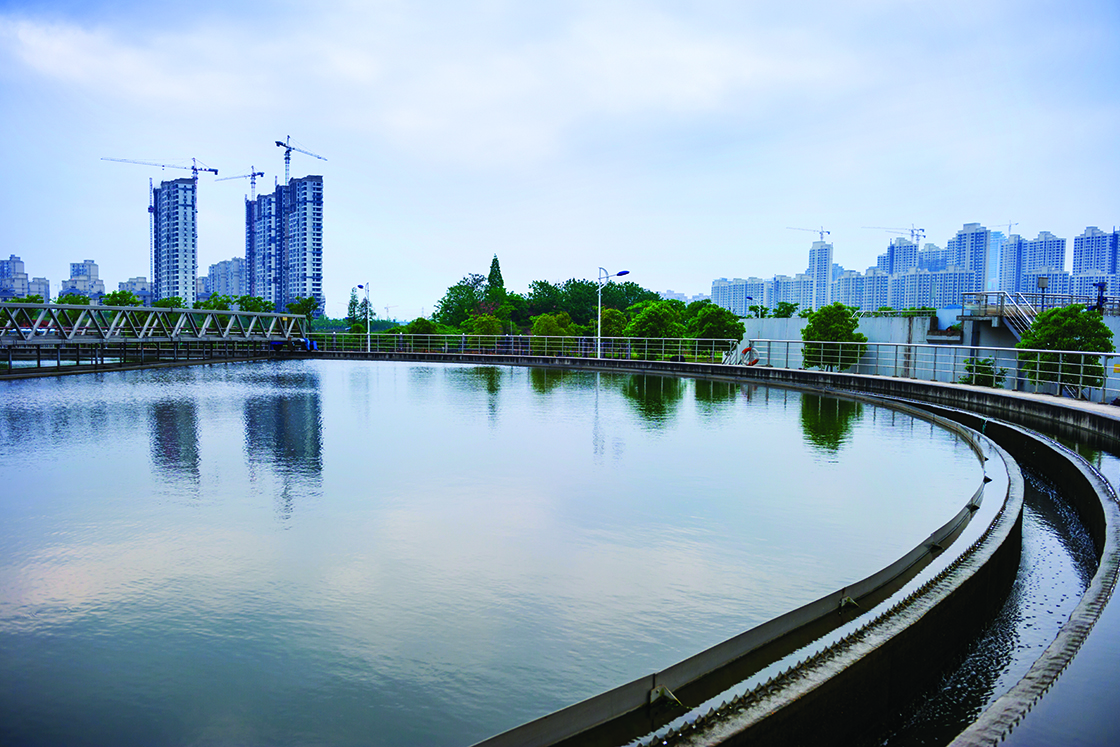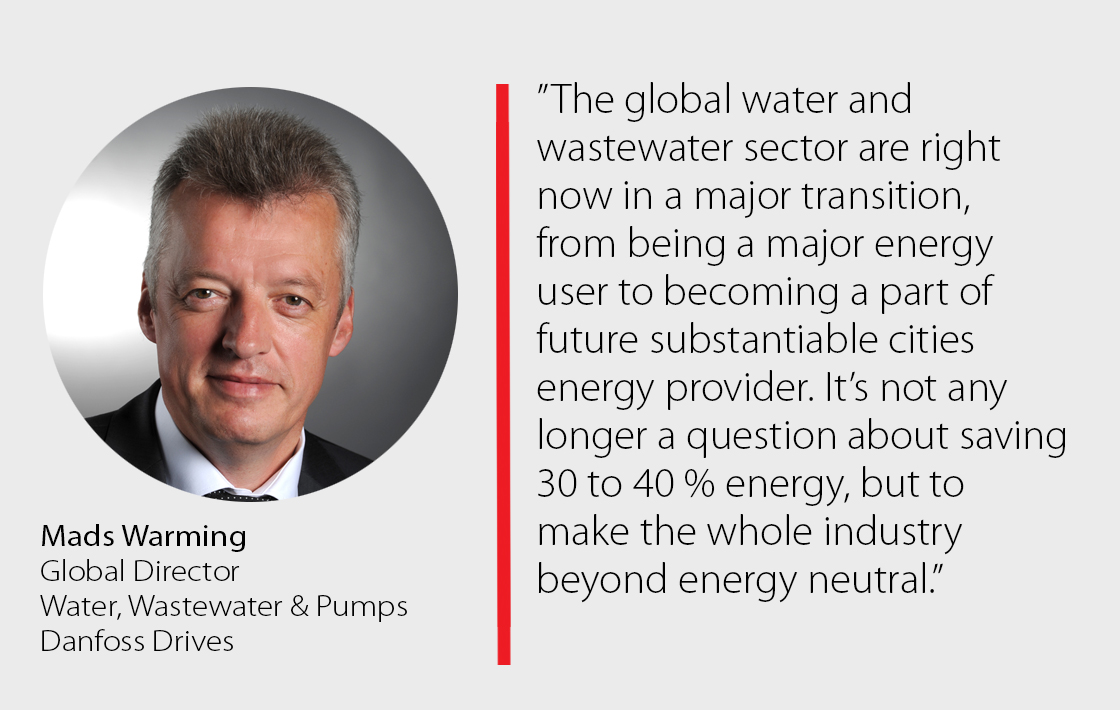
By Mads Warming, Global Head, Water and Wastewater, Danfoss Drives.
Expanding water treatment globally is not only a key enabler for creating a better world for humankind. Water treatment can also contribute to fighting climate change and reduced CO2/GHG emission. Typically, the key components in water treatment emissions are methane (CH4), nitrous oxide (N2O) and carbon dioxide (CO2). CO2 results from the energy consumed. The term ‘greenhouse gases’ (GHG) refers to all 3 components.
Only about 20 % of all wastewater globally is treated [1]. In other words, wastewater for 6 billion people remains untreated. Untreated wastewater running directly out into the environment generates a GHG footprint roughly 3 times higher that of the GHG footprint when the same wastewater is treated in a traditional wastewater facility.
The UN sustainable development goal SDG 6 defines improvement targets for clean water and sanitation [2]. SDG 6.2 aims to achieve access to adequate and equitable sanitation and hygiene for all by 2030 [3]. To achieve this target, we must increase wastewater treatment from today’s level of 20 % of all wastewater generated globally, to 60 % in 2030. Achieving this aim would bring with it a multitude of health improvements, but additionally, would also reduce the GHG load. Perhaps unexpectedly for many, the GHG effect of letting the wastewater escape untreated into the surrounding environment is far more detrimental than the GHG effect of additional energy consumption due to new wastewater facilities.
According to International Water Association, treating wastewater cuts its GHG emission to about one-third [4]. An additional one-third reduction in GHG emission can be achieved by using digitalization and applying variable speed drive (VSD) control [5]. This is great news – it means we already have the technology we need to move forward.
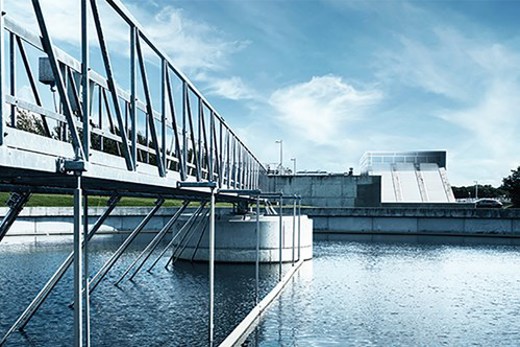
Decarbonization of the wastewater industry
One of the most energy- efficient wastewater treatment facilities globally is operated by Aarhus Vand, a water utility operating in Denmark’s second largest city, Aarhus. Its Marselisborg plant is a traditional, rather old, activated sludge wastewater facility handling household wastewater in a catchment area of about 200,000 people.
The facility has no external carbon – for example, no FOG (fat, oil and grease), no external sludge, no wind power, no solar power, no burning of sludge, no heat pumps. It treats water very close to plain household wastewater supplied from a combined sewage collection system, and still it generates twice the energy needed for cleaning the wastewater to very low outlet values (BOD5 = 2.4/TN= 6.0/TP = 0.2).
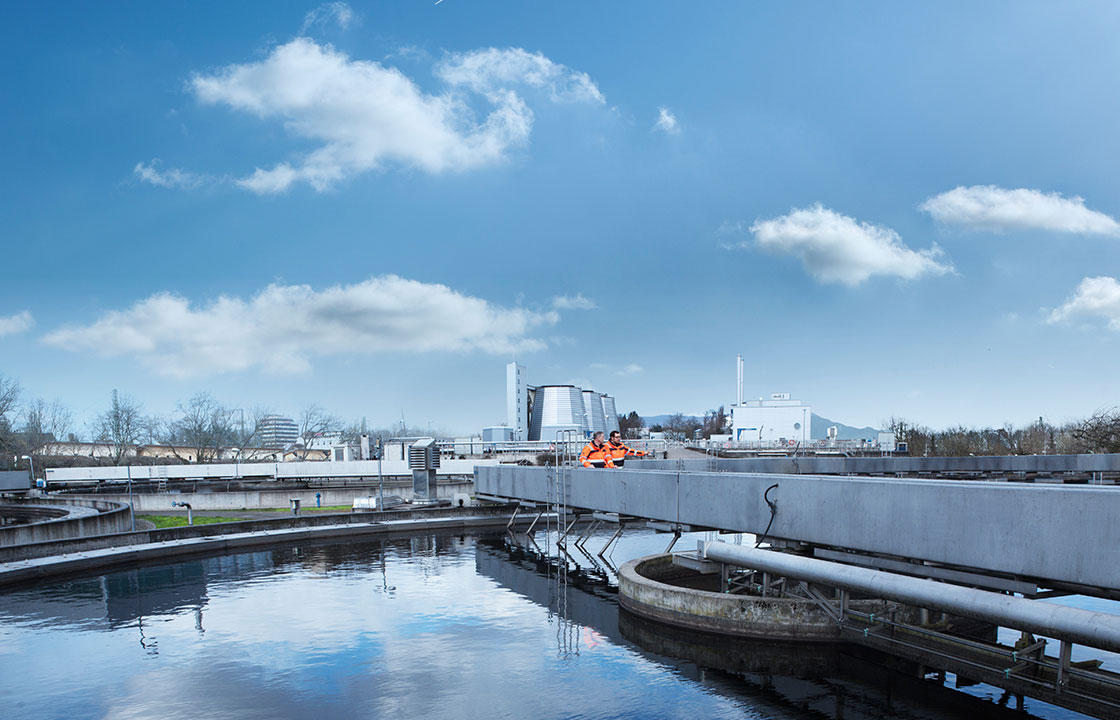
Digitalization in practice
The Marselisborg wastewater facility has been upgraded with more energy efficient equipment, especially with advanced real-time process control. This control system is based on a much wider use of real-time online sensors and Danfoss VSD than is normally seen. The key strategy is two fold:
- Save energy
- Increase energy production
The experience from this and other facilities in Denmark indicates that of the all improvements obtained over the years, more than 70 % of the energy reduction is obtained from process control improvements, also known as digitalization.
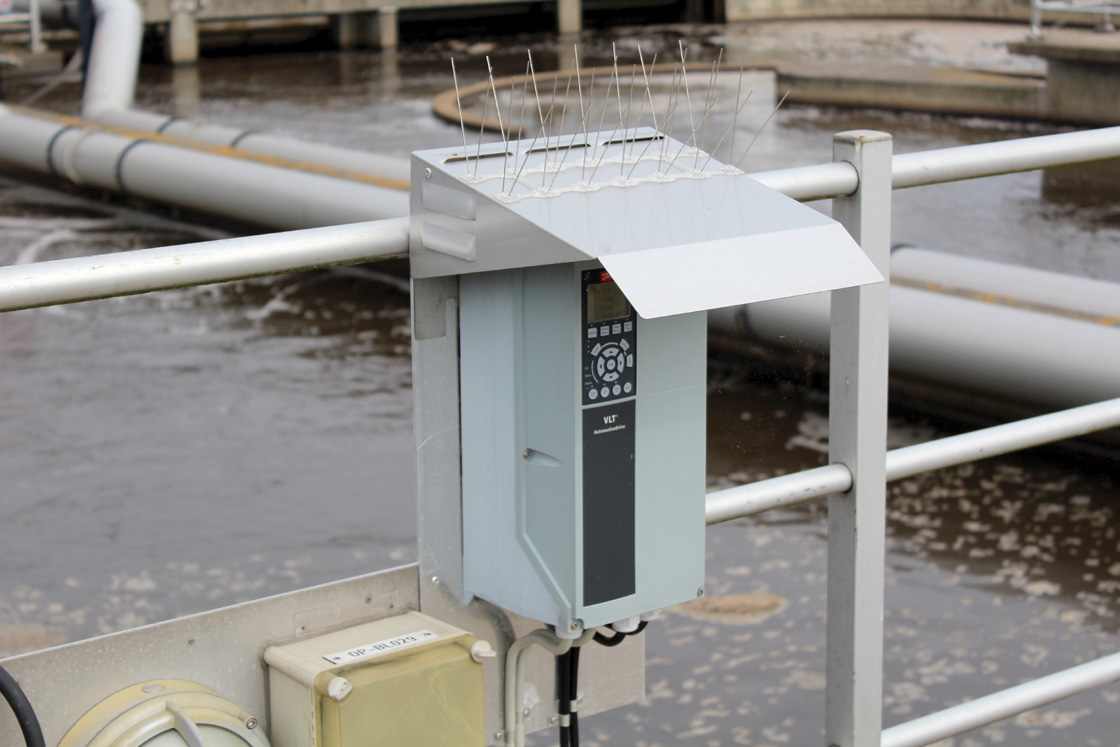
New advanced VSD with edge computing technologies supports digitalization
Danfoss water-dedicated VSD is supporting digitalization even more. Edge computing technologies integrated in the VSD provide intelligent condition-based monitoring of equipment such as pumps and fans, based on both vibration and load-envelope detection [7].
How does it work?
Let’s use the example of a pump. The VSD creates a baseline for power consumption and vibration as a function of the pump speed, based on say one day, or one week’s operation. Having established the baseline, the VSD then detects anomalies and reports them. Besides monitoring power consumption patterns, the VSD also monitors motor windings. The condition monitoring functionality helps water facilities run more cost effectively, as well as reducing energy consumption.
The VSD also offers other digital functions which contribute towards running efficiently with a lower GHG footprint, for example a standard integrated deragging function which automatically prevents unnecessary pump clogging.
The digital approach to decarbonization has documented results impacting the future of wastewater facilities. There are several ambitions in improving health for mankind:
- the primary aim of establishing more wastewater treatment plants
- an aim for wastewater treatment to become an integrated part of future energy networks
- a contribution from increased wastewater treatment to reducing CO2/GHG emissions.
Digitalization and control using VSDs are proven to be key enablers in achieving all these goals.
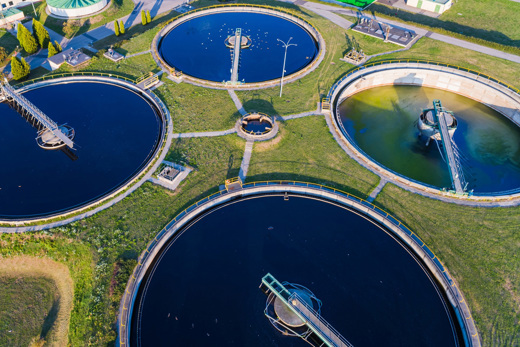
In the World Energy Outlook 2018, IEA has calculated that if SDG 6.2, as mentioned earlier, is achieved either by controlling the wastewater facilities the traditional way alone, or in addition using energy generation as at the Marselisborg plant, the reduction in energy consumption would equate to approximately 650 TW. To put this in perspective, 650 TW is a value equivalent to the total annual energy output of all coal-fired power plants in Europe [8].
It’s one thing to transform a water treatment facility into an energy producer, another matter entirely to make it climate neutral. Recently, there has been increased focus on nitrous oxide (N2O) emission, as it has a global warming potential up to 300 times that of CO2, and for methane a factor of 30. Calculations show that this wastewater facility is carbon positive, even including the GHGs and sludge handling – clearly demonstrating that decarbonization is possible.

